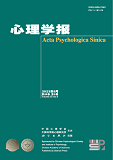Humans are extremely social beings, and we attempt to repair our ruptured relationships when transgressions occur that damage interpersonal cooperation. The expression of guilt and remorse by the transgressor and the forgiveness by the victim are both vital to the repair process. To some extent, transgressors’ remorse is the most prominent elicitor of victims’ forgiveness. Previous studies have demonstrated that forgiveness emerges as early as 5 years old and that young children are capable of forgiving a remorseful transgressor even in the absence of an explicit apology. Given the emphasis on relationship harmony among Chinese people in a collectivistic culture, parenting and socialization might help children understand peers’ remorse intentions and forgive them at a much earlier age. Furthermore, the high need for personal reputation and social image in peer interactions, which is called “face” (mianzi) by the Chinese, might lead to individuals’ forgiveness decisions being influenced by bystanders who witness or participate in group interactions. Therefore, this study aimed to investigate whether 4- or 5-year-olds could have the capacity to infer an apology from displays of transgressors’ remorse in order to reveal the influence of remorse on forgiveness and further explore the activation effect of different types of bystanders among the association between remorse and forgiveness.
Study 1 was a one-factor (expression of remorse: remorse vs. no remorse) within-subject design. Forty-nine children aged 4 to 5 years (27 girls) were investigated by a classic paradigm of remorse and forgiveness. The “tear picture” game was used to create conditions of expressing remorse and not expressing remorse. Then, children were asked ten questions designed to assess whether they understood the true intention of remorse. Finally, the resource distribution task was used to assess forgiveness behavior. In Study 2, a total of 139 4- to 5-year-old children (80 girls) were recruited to participate in a 2 (expressions of remorse: remorse vs. no remorse) × 4 (types of bystander: no bystander vs. teacher vs. good friend vs. stranger) mixed experimental design. The procedure used in Study 2 was identical to that used in Study 1.
The results showed that: In Study 1, both 4-year-old children and 5-year-old children truly understood the intention of the expression of remorse, and they were much more forgiving of a remorseful transgressor than of a transgressor who had not shown remorse. In Study 2, although children were still more forgiving of a remorseful transgressor than an unremorseful transgressor in the presence of bystanders, bystanders significantly increased the level of forgiveness shown toward unremorseful transgressor and reduced the level of forgiveness for remorseful transgressor. Specifically, for remorseful transgressor, child victims were more forgiving of a transgressor while in the presence of strangers than while in the presence of teachers or good friends; however, for unremorseful transgressor, child victims who were being observed by teachers or good friends showed more forgiveness behavior than did victims who were being observed by stranger bystanders. Furthermore, the results showed that young children were more likely to equally distribute flowers to remorseful and unremorseful transgressor in the presence of bystanders, especially teachers or good friends.
This study successfully revealed that young Chinese children could accurately understand the intention of transgressors’ remorse and thus be willing to perform forgiveness behavior at age 4, which is exactly 1 year earlier than their counterparts in the Western sample. More importantly, we also present a new theoretical hypothesis, namely, the “bystander-activation effect of social expectations”, to propose that the presence of bystanders activates individuals’ socially desirable behaviors, such as “requite injury with kindness” and “egalitarianism”, in the Chinese collectivist culture. Thus, it is easier to understand why bystander onlooking could increase the level of forgiveness for unremorseful transgressor and cause young victims to distribute flowers to remorseful and unremorseful transgressor equally. Furthermore, the greater the authoritative or intimate level of bystanders is, such as teachers or good friends, the stronger the activated social expectations are and the more socially desirable the engaged-in behaviors are. This study provides important enlightenment for understanding the association between remorse and forgiveness and for rethinking the cross-cultural differences in children’s socialization.




